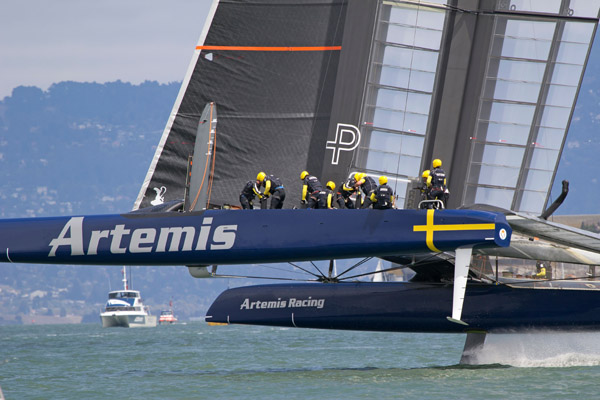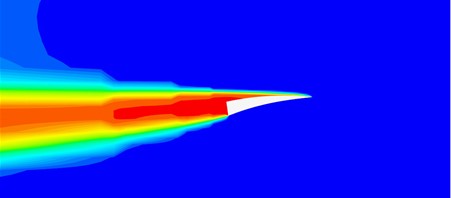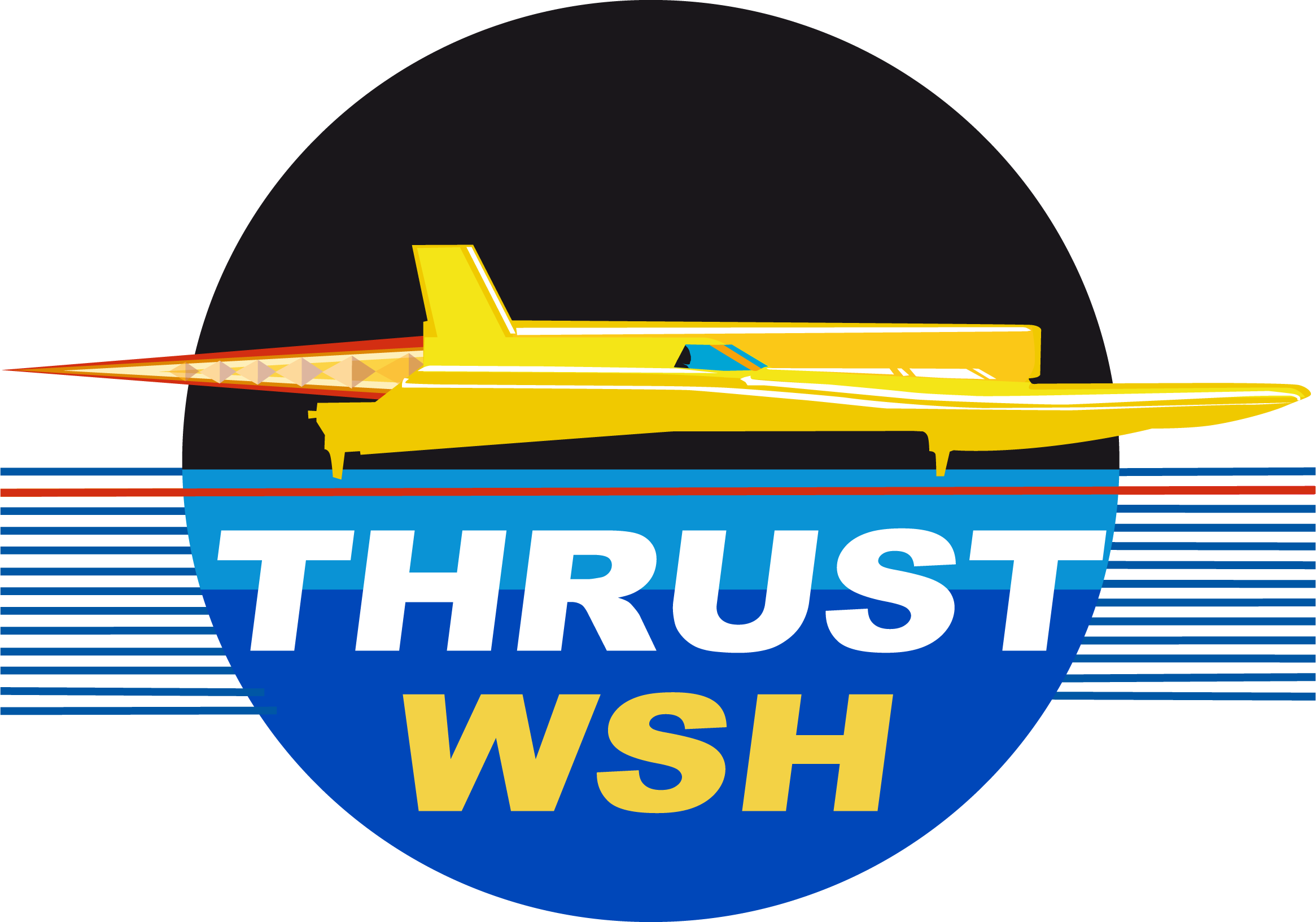At the end of our initial research when we realised that the design goal of a stable and controllable craft at 450mph was simply too dangerous to proceed with, we faced a difficult choice. One option was to stop the project. Another was to reduce our target speed – discounted because other challengers are active. Adoption of some sort of automatically movable aerodynamic devices was also considered but that’s outside of the UIM governing body rules

You may be familiar with hydrofoils from the Americas Cup boats. While those with knowledge of WSR history, may know that hydrofoils have been tried before – once successfully, once an embarrassing failure. The issue is cavitation – essentially something hitting the water hard enough to vapourise it resulting in loss of lift.
This cavitation barrier or threshold can be compared in some ways to the Mach 1 “sound barrier” we faced on land. Is it really a barrier or can it be crossed if you carry out extensive research to find out what’s really happening? Thanks to our partners QinetiQ, we’ve carried out extensive CFD simulations using a variety of foil shapes and sizes.
From our initial research, we now think it is possible. But – there’s theory, and then there’s reality.
So we won’t know if it really might be possible until we’ve completed the next stages of testing. We will take all our research data and then validate it by building a series of test boats running at speeds up to 225mph. That in itself is a major challenge but a critical step. Only when we’ve done that and carried out a full analysis of the results can we be confident enough to say that we have a design that should be stable, controllable and fast.
To understand more about this complex area, here is some more detailed information from Butch Dalrymple-Smith.
WHY HYDROFOILS?
At normal boat speeds hydrofoils can reduce drag by lifting the hull clear of the water. This eliminates wave-making drag and reduces the surface area in contact with the water, so decreasing viscous (or skin-friction) drag as well. Decreasing drag means going faster with the same power.
A hydroplane skimming across the surface can be upset by the slightest wavelet. Even when it looks calm, the water surface is dangerous, destructive and uncomfortable at high speed. Hydrofoils lift the boat above the surface, deriving lift from undisturbed water deeper down.
At 450 mph, control is just as important as pace. If you lose control, the record attempt will be a disaster however fast your potential speed. Hydrofoils can be controlled so they lift only as much as is required at any given moment.
The thrust of a jet engine tends to push the bow underwater. but hydrofoils can be adjusted to keep the boat level.

WHY NOT HYDROFOILS?
With these advantages, why has the World Water Speed record only once been held by a hydrofoil craft (Hydrodrome IV in 1919 at 70.86 mph) and why has no one successfully challenged for the record on hydrofoils since then?
Although compared to a regular planing hull, hydrofoils reduce drag, high speed hydroplanes already have reduced drag because they have only a tiny area of planing shoes in contact with the water surface. For them dragging hydrofoils through the water means adding considerable resistance. The extra drag arises because planing shoes are only wetted on the bottom. while hydrofoils are wetted on the top surface as well. There is also drag from the strut that holds the hydrofoil, and additional “interference drag” between the two.
But the main reason why hydrofoils aren’t used for breaking records is cavitation.
THE CAVITATION THRESHOLD
Up until now, hydrofoils have been limited to about 70 miles an hour, at which speed the water vapourises due to the extremely low pressure above the hydrofoil.
This kills lift and damages the hydrofoils due to vapour bubbles imploding on the hydrofoil surface.
A further problem is that hydrofoils designed to operate beyond the cavitation threshold are not capable of generating the lift required to take off at lower speed.
The ThrustWSH team believe they can overcome these obstacles and are confident the boat will run at speeds never before achieved on hydrofoils.

CROSSING THE THRESHOLD
Similar to the sound barrier that posed a major problem for aircraft designers before the middle of the 20th century, to date no hydrofoil has ever gone faster than the cavitation threshold and maintained super-cavitating flight.
The hydrofoils of ThrustWSH have been designed to run while cavitating, with the destructive condensation of the water vapour imploding safely behind the hydrofoil itself.
Details of the hydrofoil design will be not published before real-life trials have confirmed the result of computer fluid dynamic simulations, which already indicate that ThrustWSH will be able to cross the cavitation threshold and reach its design speed.
WHAT NEXT?
We are confident that ThrustWSH will become the first boat ever to demonstrate stable, sustained super-cavitating flight.
Just as Concorde changed supersonic flight from being a pioneering technological achievement to being a routine, inconsequential event, so in future supercavitating hydrofoils could allow fast passenger ferries to go from their current speed of around 40 mph (the same as Turbinia achieved in 1897) to around 200 miles per hour or even faster.
Join us in this exciting, unprecedented adventure, venturing where no-one has ever been before.

